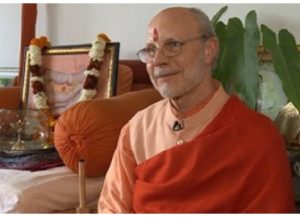Thursday Satsang In Person and Via Zoom – September 28, 2023
“Savoring the Rasa of Satsanga: with Swami Ritavan Bharati
7:00 p.m. – 8:30 p.m. CDT
5:30-6:45 p.m.: Gentle Hatha Yoga with Susan Guthrie
7:00-7:30 p.m.: Meditation with Swami Ritavan Bharati
7:30-8:30 p.m.: “Savoring the Rasa of Satsanga”
with Swami Ritavan Bharati
8:30 p.m.: Evening Prayers
8:40 p.m.: Snacks
Join Swami Ritavan for an inspiring talk,”Savoring the Rasa of Satsanga” on Thursday, September 28th.
“What is Rasa?”
Rasa (refers to the creation and reception of a distinct ‘flavor’ or quality of something. As a Sanskrit theological concept, ‘rasa’ was popularized by specific …Krishna-centered bhakti traditions, such as Gaudiya Vaishnavism from the fifteenth century. The theological use of the word can be found early, about two thousand years before the Nimbarka or Chaitanya schools of bhakti, in a phrase that Chaitanya traditions frequently quote: “Truly, the Lord is rasa” (raso vai sah) of the “Taittiriya Upanishad” (2.7.1). This statement expresses the view that God is the one who enjoys the ultimate rasa, or spiritual rapture and emotions.
It is believed Rupa Goswami developed, under the direct guidance of Caitanya, the articulated and formulated theology of ‘rasa’ as “the soul’s particular relationship with the divinity in devotional love”. Rupa’s text draws largely from the foundational theory of ‘rasa’ formed by Bharata Muni, the originator of Sanskrit dramaturgy, or “Natya Sastra” (perhaps as early as the 2nd century BCE). These relationships with the divinity in devotional love, rasa, can closely resemble the variety of loving feelings that humans experience with one another, such as beloved-lover, friend-friend, parent-child, and master-servant. Rasas are distinguished as lower and higher and according to “Bhagavad Gita”, it appears that the three higher rasas are acknowledged and preferred by Arjuna. The higher rasas are described as loving, friendly, and fraternal types of relationships. From Wikipedia.org





